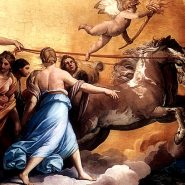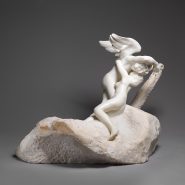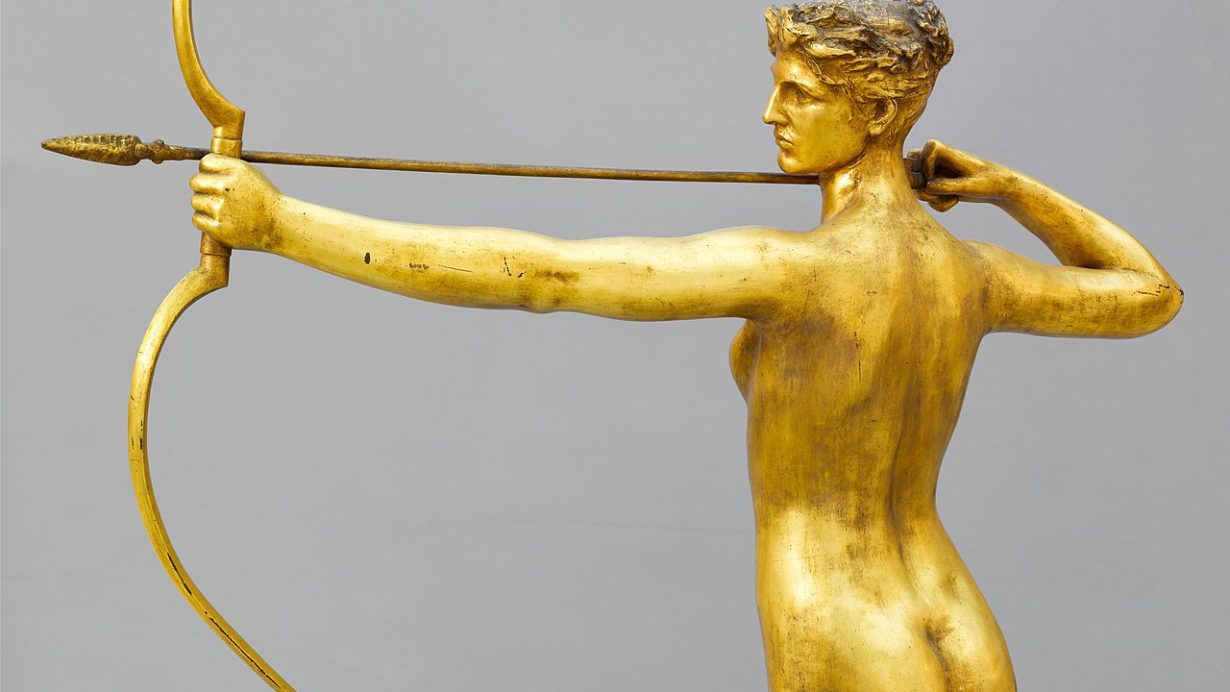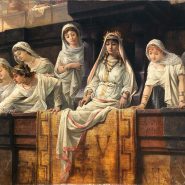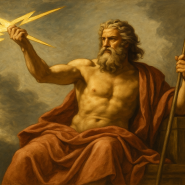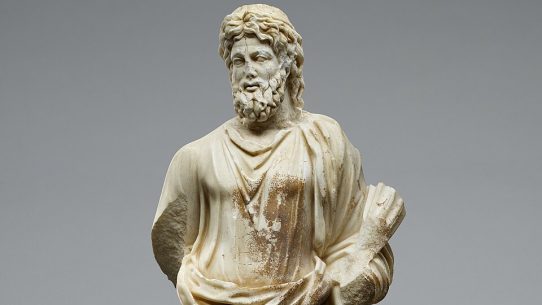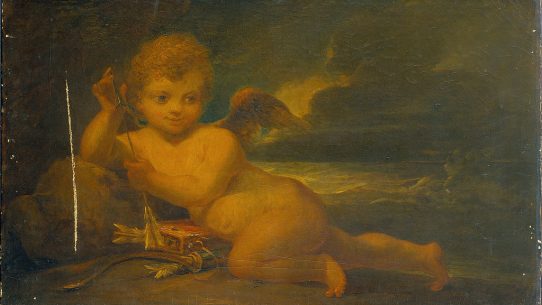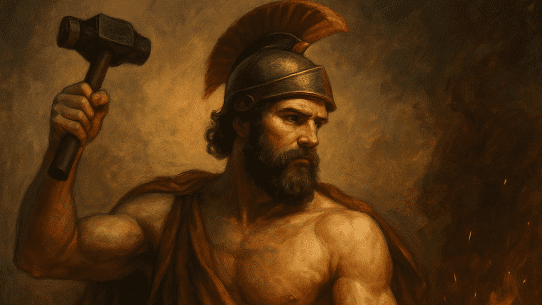Diana, the luminous goddess of the moon, wilderness, and the hunt, stood as one of Rome’s most beloved and enduring deities. She represented independence, purity, and the sacred balance between nature and humanity.
To the Romans, Diana was both protector and avenger — guardian of women, animals, and untamed places, yet also a fierce huntress who punished arrogance and injustice. Her light illuminated forests and hearts alike, guiding travelers, hunters, and those who sought freedom from oppression.
Revered as both virgin and nurturer, she symbolized the strength of self-mastery and the serenity of harmony with nature’s eternal rhythm.
Name and Origin
The name “Diana” derives from the Proto-Indo-European root div-, meaning “bright” or “divine.” She was originally an ancient Italic goddess of the wild, long before her identification with the Greek Artemis. While her Greek counterpart was known for her association with the moon and chastity, the Roman Diana also embodied civic virtues — protection, equality, and justice.
Her worship was deeply democratic: slaves, women, and the poor were welcomed at her altars. In her, Rome found a deity who represented both celestial majesty and earthly compassion, the unbroken bond between divine light and the natural world.
Attributes and Symbols
Diana was depicted as a youthful huntress carrying a bow and quiver, often accompanied by a stag or hunting dogs.
The crescent moon above her brow symbolized her dominion over night and cycles of renewal. Her sacred groves, especially the oak woods of Nemi, were places of peace where no blood could be shed. The torch, another of her emblems, represented her power to guide souls through darkness — physical and spiritual alike.
Her symbols of the bow, moon, and forest together expressed her dual nature: fierce and serene, independent yet protective, wild yet pure.
Family and Relationships
Diana was the daughter of Jupiter and Latona, and the twin sister of Apollo, god of the sun. Their birth on the island of Delos followed Latona’s long flight from Juno’s wrath. Even as an infant, Diana aided her mother by assisting in Apollo’s birth, a myth that forever linked her with childbirth and protection of women in labor.
Though she vowed lifelong virginity, many myths described her deep compassion for mortals, particularly women and the powerless. In her divine solitude, she embodied freedom — a goddess untouched by the control of gods or men. Her attendants, nymphs bound by vows of chastity, roamed the forests beside her, celebrating independence and purity of purpose.
Myths and Stories
Diana’s myths reflected both mercy and wrath. One of the most famous tells of Actaeon, a mortal hunter who stumbled upon her bathing in a secluded glade. For this trespass, she transformed him into a stag, and his own hounds tore him apart. The tale served as a warning against violating divine sanctity and the boundaries of nature.
Yet Diana could also show compassion. In the story of Orion, the great hunter who became her companion, she was deceived by Apollo into slaying him. Grieving, she placed him among the stars as a constellation, immortalizing his memory in the night sky.
Another beloved tale linked her to the Trojan hero Aeneas. When Aeneas’s mother, Venus, needed protection for her son, Diana’s priestess Camilla — a warrior maiden swift as the wind — fought and died in his defense.
Through such stories, Diana emerged not as a distant deity but as a living force of justice and devotion. She was also invoked during childbirth, under her aspect as Diana Lucina, guiding new life into the world with gentle hands. Her myths celebrated balance: the union of strength and tenderness, autonomy and care.
Domains and Powers
Diana ruled over the moon, the hunt, wild animals, and childbirth. She governed the natural cycles of life — the phases of the moon, the seasons of fertility, and the rhythms of the wilderness. Her dominion extended to the sacred groves where humans met the divine in solitude.
She was protector of women, guardian of the oppressed, and avenger of those wronged. Her power was both physical and moral: she embodied purity not as denial, but as strength of spirit. In her light, the Romans saw the eternal reminder that nature’s order is divine and that freedom, rightly guided, is sacred.
Philosophy and Moral Influence
Philosophers and poets viewed Diana as a symbol of independence, virtue, and natural balance. Her worship reflected the Roman ideal of moderation — living in harmony with one’s nature without corruption or excess.
Stoic thinkers interpreted her as the embodiment of moral clarity, the inner light that guides right action. Her vow of chastity symbolized mastery of desire and devotion to higher purpose, while her love of the forest represented the unspoiled purity of the soul.
Through Diana, Romans learned that true power lies not in domination but in self-control and alignment with the natural world.
Temples and Worship
The most famous sanctuary of Diana stood at Lake Nemi, near Aricia, known as the Nemus Dianae or “Sacred Grove of Diana.” There, she was worshipped as Diana Nemorensis, goddess of the woodlands and the moon. Her temple became a refuge for runaway slaves and the poor, who found freedom under her protection.
Festivals such as the Nemoralia, held each August, saw worshippers carry torches around her lake by moonlight, offering garlands and prayers for fertility, health, and independence. In Rome, her temples were among the earliest shared by patricians and plebeians alike — reflecting her role as guardian of equality and justice.
Legacy and Cultural Influence
Diana’s legacy endured long after the fall of Rome. In art and literature, she came to symbolize chastity, freedom, and the mysterious power of the feminine. Poets like Ovid and Virgil praised her beauty and ferocity, while later artists of the Renaissance — from Titian to Raphael — portrayed her as the embodiment of pure strength and divine grace. Her image merged with later Christian iconography of the Virgin Mary, preserving her symbolism of purity and compassion.
The modern word “diurnal,” meaning “of the day,” and its counterpart “nocturnal,” both trace linguistic roots to her name, reflecting her dominion over celestial cycles. Through her, the Romans immortalized the sanctity of nature and the freedom of the soul.
Unique Traditions and Notes
Diana’s worshippers often hung votive offerings — small figures of stags, dogs, or moons — in her temples as signs of gratitude.
Hunters invoked her before setting out, and women prayed to her for safe childbirth or freedom from oppression. Her priest at Nemi, the Rex Nemorensis, was chosen in a dramatic ritual: only by defeating the previous priest in combat could he claim the role, symbolizing death and renewal in service of the goddess.
Through such mysteries, Diana remained a figure of awe and reverence, the untamed light that guarded both nature and the human spirit.
Adapted from public-domain materials, including Project Gutenberg and Wikisource.
